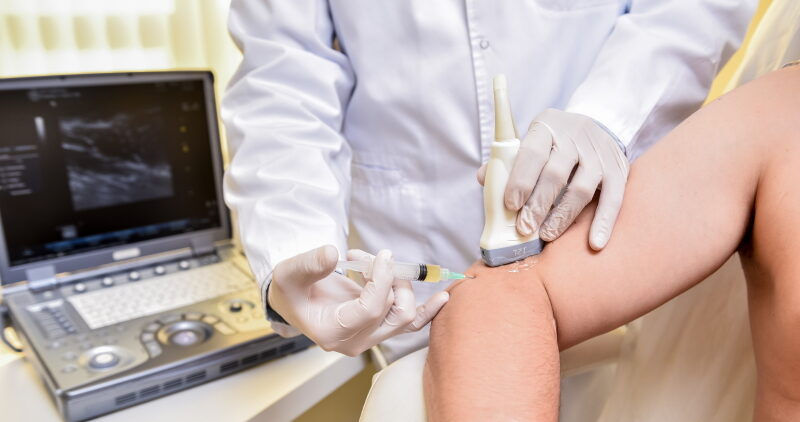PRP Therapy for Elbow Pain: A Natural Solution for Faster Healing
- Dr. Jene Ferrante

- Mar 28
- 3 min read

Elbow pain can be a persistent and frustrating issue, affecting both athletes and individuals with repetitive strain injuries. Whether caused by tennis elbow, golfer’s elbow, arthritis, or tendon injuries, chronic elbow pain can make simple activities like gripping, lifting, or even writing uncomfortable. While conventional treatments like rest, physical therapy, and pain relievers can help, they often provide only temporary relief.
Platelet-Rich Plasma (PRP) Therapy has emerged as a cutting-edge regenerative treatment that accelerates the body’s natural healing process, offering a non-surgical alternative for pain relief and tissue repair.
What is PRP Therapy?
PRP Therapy is a biologic treatment that utilizes the healing properties of your own blood to repair damaged tissues and reduce inflammation. The procedure involves:
1️⃣ Blood Draw: A small sample of your blood is taken.
2️⃣ Centrifugation: The sample is spun in a centrifuge to isolate platelets and growth factors, which are essential for tissue regeneration.
3️⃣ Injection: The concentrated PRP is injected into the injured area of the elbow, stimulating healing at a cellular level.
PRP promotes collagen production, accelerates tissue repair, and reduces inflammation, making it a powerful tool for treating elbow pain.
Common Elbow Conditions Treated with PRP
PRP Therapy is particularly effective for chronic and acute elbow conditions, including:
🔹 Tennis Elbow (Lateral Epicondylitis): Inflammation and micro-tears in the tendons on the outer elbow due to repetitive wrist and arm motion.
🔹 Golfer’s Elbow (Medial Epicondylitis): Similar to tennis elbow but affects the tendons on the inner elbow, causing pain and stiffness.
🔹 Elbow Arthritis: PRP helps regenerate cartilage and reduce joint inflammation, offering relief for arthritis-related pain and stiffness.
🔹 Tendon and Ligament Injuries: PRP speeds up healing for tendonitis, sprains, and ligament tears that cause persistent pain and weakness.
Benefits of PRP Therapy for Elbow Pain
✅ Natural Healing: Uses your body’s own platelets to repair damaged tissues.
✅ Minimally Invasive: No surgery, no stitches, and minimal downtime.
✅ Reduces Pain and Inflammation: Targets the root cause instead of masking symptoms.
✅ Faster Recovery: Stimulates tissue regeneration, leading to quicker and stronger healing.
✅ Fewer Side Effects: PRP is derived from your own blood, reducing the risk of allergic reactions or complications.
What to Expect During a PRP Treatment
A typical PRP therapy session takes about 45-60 minutes and follows these steps:
📌 Preparation: A healthcare provider will review your medical history and assess your elbow condition.
📌 Blood Collection & Processing: A small blood sample is drawn and processed to isolate the platelets.
📌 Injection Procedure: The PRP is injected directly into the injured tissue. In some cases, ultrasound guidance may be used for precision.
📌 Post-Treatment Care: Mild swelling or discomfort is normal for a few days. Patients are advised to avoid strenuous activities for about a week but can resume light movements within a couple of days.
Full results can take several weeks as the healing process continues. Most patients experience significant pain relief and functional improvement within 4–6 weeks.
Is PRP Therapy Right for You?
PRP Therapy is ideal for individuals who:
✔ Have chronic elbow pain that hasn’t responded to conventional treatments.
✔ Want to avoid surgery and long-term medication use.
✔ Are active athletes or professionals with repetitive elbow strain.
✔ Are looking for a natural, regenerative approach to healing.
PRP is a promising solution for long-term pain relief and tissue regeneration. If elbow pain is interfering with your daily activities, consulting a PRP specialist may be the first step toward recovery.
Ready to Heal Naturally?
Don’t let elbow pain limit your lifestyle. Explore PRP Therapy as a powerful, non-surgical treatment option for long-lasting relief.
📅 Schedule a consultation today and take the first step toward pain-free movement!




Comments